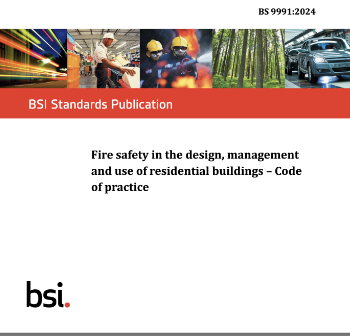Site layout plan for construction
Contents |
[edit] What are site layout plans?
Site layout plans are prepared by contractors as part of their mobilisation activities before work on site commences.
These are a crucial part of construction management, as sites can be very complex places involving the co-ordination and movement of large quantities of materials as well as high-value products, plant and people. Effectively and accurately laying out a site can help ensure that the works are undertaken efficiently and safely. Careful sizing and positioning of site facilities can help reduce travel times, congestion, waiting times, and so on, and help to make the site a more effective workplace with better worker morale.
[edit] How is a site layout plan prepared?
Site layout planning involves four basic processes:
- Identifying the site facilities that will be required.
- Determining the sizes, and other constraints for those facilities (such as access requirements, security, services and so on).
- Establishing the inter-relationships between those facilities.
- Optimising the layout of the facilities on the site.
As sites will change in nature during the course of the works, there may be a number of different site layout plans for different phases, and there may be more detailed plans showing particularly complex areas or sequences or describing specific functions.
The use of building information modelling (BIM) can help describe the construction site in three dimensions and through different phases, effectively creating a virtual construction model.
[edit] What should a site layout plan include?
Site layout plans might include locations for and sizes of:
- Zones for particular activities.
- Cranes (including radii and capacities).
- Site offices.
- Welfare facilities.
- Off-loading, temporary storage and storage areas (laydown areas).
- Sub-contractor facilities.
- Car parking.
- Emergency routes and muster points.
- Access, entrances, security and access controls, temporary roads and separate pedestrian routes.
- Vehicle wheel washing facilities.
- Waste management and recycling areas.
- Site hoardings and existing boundaries.
- Protection for trees, existing buildings, neighbouring buildings, and so on.
- Signage.
- Temporary services (including electrical power, lighting, water distribution, drainage, information and communications technology, site security systems, and so on)
- Temporary works (such as propping solutions for retained structures, sheet piling details, and so on).
- Areas for the construction of mock-ups for testing.
- Fabrication facilities.
[edit] Why is a site layout plan necessary?
Problems caused by poor site layout planning can include:
- Inappropriate storage which can result in damage to products and materials.
- Poor siting of plant.
- Poor siting of welfare facilities.
- Inadequate space provision.
- Unsatisfactory access.
- Security and safety issues.
- Poor way finding (due to complex layouts or inadequate signage).
- Demoralised workers, delays and increased costs.
See also: Contractor's site layout planning and Virtual construction model.
[edit] Related articles on Designing Buildings
- Construction phase plan.
- Construction strategy.
- Contractor's site layout planning.
- Haul road.
- Lay down area.
- Lighting of construction sites.
- Main construction compound.
- Mobilisation to site: a quality perspective.
- Pre-construction information.
- Safety signs.
- Site area,
- Site facilities.
- Site office.
- Site plan.
- Site storage.
- Temporary site services.
- Temporary works.
- Virtual construction model.
- Welfare facilities.
- Wheel washing system.
Featured articles and news
CLC and BSR process map for HRB approvals
One of the initial outputs of their weekly BSR meetings.
Building Safety Levy technical consultation response
Details of the planned levy now due in 2026.
Great British Energy install solar on school and NHS sites
200 schools and 200 NHS sites to get solar systems, as first project of the newly formed government initiative.
600 million for 60,000 more skilled construction workers
Announced by Treasury ahead of the Spring Statement.
The restoration of the novelist’s birthplace in Eastwood.
Life Critical Fire Safety External Wall System LCFS EWS
Breaking down what is meant by this now often used term.
PAC report on the Remediation of Dangerous Cladding
Recommendations on workforce, transparency, support, insurance, funding, fraud and mismanagement.
New towns, expanded settlements and housing delivery
Modular inquiry asks if new towns and expanded settlements are an effective means of delivering housing.
Building Engineering Business Survey Q1 2025
Survey shows growth remains flat as skill shortages and volatile pricing persist.
Construction contract awards remain buoyant
Infrastructure up but residential struggles.
Home builders call for suspension of Building Safety Levy
HBF with over 100 home builders write to the Chancellor.
CIOB Apprentice of the Year 2024/2025
CIOB names James Monk a quantity surveyor from Cambridge as the winner.
Warm Homes Plan and existing energy bill support policies
Breaking down what existing policies are and what they do.
Treasury responds to sector submission on Warm Homes
Trade associations call on Government to make good on manifesto pledge for the upgrading of 5 million homes.
A tour through Robotic Installation Systems for Elevators, Innovation Labs, MetaCore and PORT tech.
A dynamic brand built for impact stitched into BSRIA’s building fabric.
BS 9991:2024 and the recently published CLC advisory note
Fire safety in the design, management and use of residential buildings. Code of practice.

























Comments
[edit] To make a comment about this article, click 'Add a comment' above. Separate your comments from any existing comments by inserting a horizontal line.